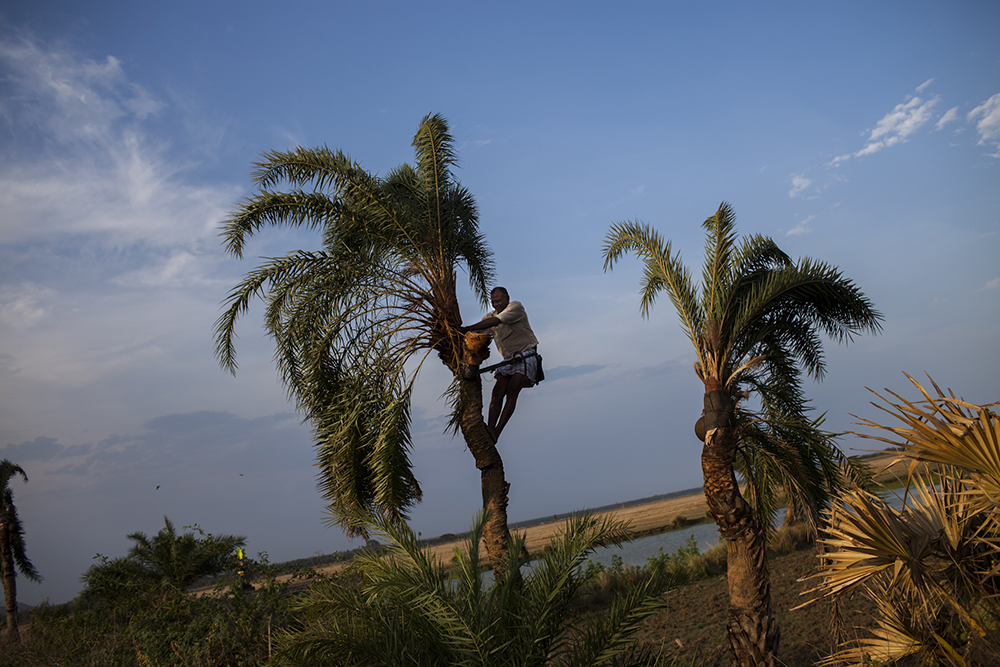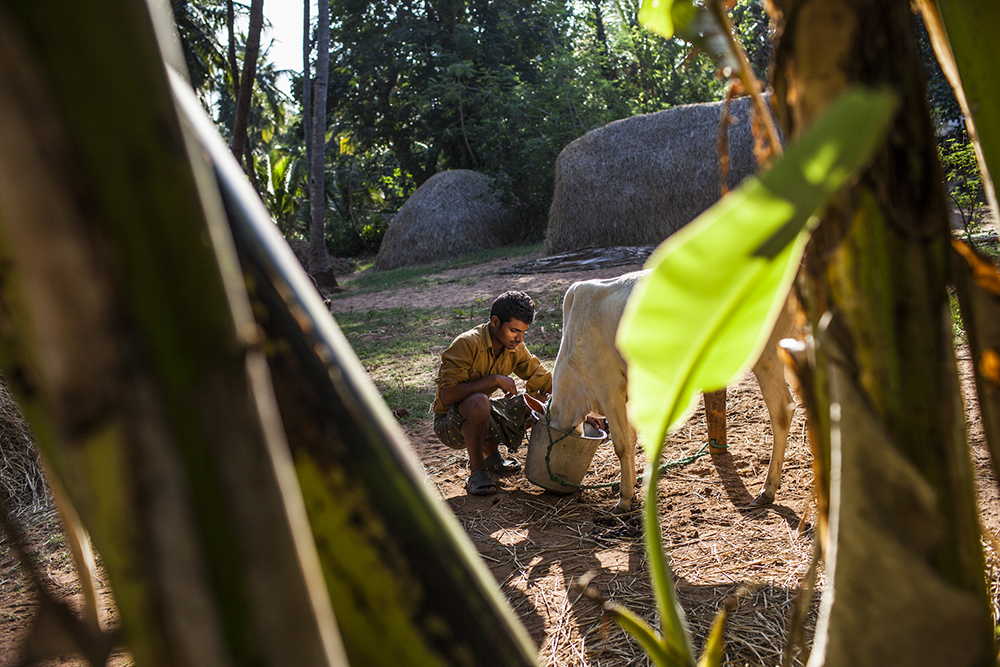The northern coast of Andhra Pradesh is so lush it is known as Uddanam, Sanskrit for “beautiful garden” or “paradise.” And beautiful it is- gangly palm trees line dusty country roads traversing through rice paddy fields, fertile earth sprouts green of every shade. Farmers grow coconut, cashews and rice paddy; fruit trees grow on patios and families spend evenings on front porches, chatting to friends and neighbors.
But a strange form of chronic kidney disease (CKD) has appeared over the last two decades, perplexing researchers and plaguing communities. CKD is usually caused by diabetes or hypertension, and is rampant throughout India, but this form of the disease is different.
Strikingly similar epidemics have appeared in Central America and Sri Lanka: farmers working in suffocatingly hot climates falling sick at young ages. Locals blame pesticides, or fear there is something in the drinking water. Researchers are baffled, but the disease is consistent with chronic dehydration or a toxic exposure. No one knows if the geographically distinct epidemics are related. Meanwhile, tens of thousands are sick and the number keeps growing. In India, researchers have found that this particular kind of CKD affects as much as 37% of the population in the hardest hit areas.
In the village of Varaka in Srikakulam district, we met Hyamavathi and Prameela Bendalam, co-sisters via marriage to brothers Venkataramana and Rama Rao. The husbands harvested rice paddy and coconuts on the family’s five acres of land for more than a decade. In 2005, they were both diagnosed with kidney disease and soon became too sick to work, forcing the families to take out loans and slowly sell off their land. Then in 2007, both brothers died, just one month apart.
In India, not a single study has been published on the problem, though researchers from Harvard University and Stony Brook are investigating alongside local colleagues. But the social effects of the disease are all too well known. Locals have a hard time finding marriage candidates, people outside of the community are afraid of the disease. Young adults move away in search of work. Families fall into poverty trying to save their loved ones, and then sink even deeper when they pass away.

Along the coast of northern Andhra Pradesh, a mysterious epidemic of chronic kidney disease not caused by hypertension or diabetes, the usual risk factors, has affected the region for the last two decades.

The northern coast of Andhra Pradesh is suffering from a mysterious form of chronic kidney disease. The region’s name, Uddanam, comes from a word in Sanskrit that means “beautiful garden” or “paradise”.

The mysterious form of chronic kidney disease mostly affects farmers in the region, where cashews, rice and coconut are the main crops. However, unlike similar epidemics in Central America and Sri Lanka, researchers from Harvard and Stony Brook Universities have found that men and women are almost equally affected.

Siva Bendalam feeds a cow in his village in Varaka, Srikakulam district, Andhra Pradesh. “So many people are leaving,” said Siva, who helps support his family since the death of his father and uncle in 2007. “If the disease continues, no one will be here.”

According to unpublished results from a Harvard University study, chronic kidney disease affects 24 to 37 percent of the population in some villages in Uddanam, 2 to 3 times higher than other parts of the district.

Women collect water from a bore well in Varaka, Srikakulam district, Andhra Pradesh. Water is widely suspected as the cause for the epidemic, due to the strange geographic patterns and the particular form of CKD, which is likely caused by a toxic exposure.

A long line of patients wait to see a doctor at King George Hospital in Visakhapatnam (Vizag), India, during a twice weekly nephrology clinic at the hospital. Vizag is the closest hospital with a nephrologist for people with a mysterious form of chronic kidney disease in the Uddanam region of Andhra Pradesh.

A crowd of patients and family members wait to be seen at the nephrology clinic at the public King George Hospital in Visakhapatnam.

Dr. Sasidhar Goriparthi, a nephrology fellow at King George Hospital in Visakhapatnam, talks to patients waiting in line for care in the hospital’s nephrology ward. Patients travel from all over the region to be seen in Visakhapatnam as there are very few, if any, nephrologists available in rural areas.

The Aarogyasri card of Savara Jayamma Balakrishna, 38 years old and from Srikakulam district in Andhra Pradesh, is seen at King George Hospital in Visakhapatanam. Aarogyasri is an innovative insurance scheme in the state of Andhra Pradesh that pays the insurance premium for citizens below the poverty line.

A man and woman receive dialysis at the Rajiv Gandhi Institute of Medical Sciences in tSrikakulam town of Andhra Pradesh. As part of a public private partnership with the state, the newly opened dialysis ward is run by a private company. The state has had difficulty finding a nephrologist willing to live in the area to manage the ward, however.

Ramarao Laxminarayna, a 25-year-old rice farmer from from Srikakulam district in Andhra Pradesh receives dialysis treatment at the Rajiv Gandhi Institute of Medical Sciences in Srikakulam, Andhra Pradesh. The mysterious form of chronic kidney disease is not caused by the usual risk factors of diabetes or hypertension, and affects much younger people than usual CKD.
 Hyamavathi Bendalam poses with a photograph of her deceased husband, Venkataramana Bendalam, in Varaka, Srikakulam district, Andhra Pradesh. Venkataramana and his brother Rama Rao died of chronic kidney disease within the same month in 2007. The community where they live is one of several known to have an extremely high incidence of CKD unexplained by the usual risk factors.
Hyamavathi Bendalam poses with a photograph of her deceased husband, Venkataramana Bendalam, in Varaka, Srikakulam district, Andhra Pradesh. Venkataramana and his brother Rama Rao died of chronic kidney disease within the same month in 2007. The community where they live is one of several known to have an extremely high incidence of CKD unexplained by the usual risk factors.

Prameela Bendalam lost her husband to chronic kidney disease in 2007. “I borrowed money thinking that he would survive, but he died, and now the loans have to be paid back as well,” she said.

Residents of Uddanam celebrate a festival for the goddess Asiri Polamma, said to protect three of the villages in the area. Unlike similar epidemics in Sri Lanka and Central America, this mysterious form of chronic kidney disease in India affects men and women equally, according to separate research by Harvard and Stony Brook Universities.

Laxmi Narayana, a 46-year-old coconut farmer, was diagnosed with chronic kidney disease in late 2011, and now goes for dialysis treatment at Seven Hills Hospital in Visakhapatnam. He travels hours to and from the city each week for treatment, but according to his doctor, “on dialysis people don’t do well. Holding on for a year would be just about it.”

Laxmi Narayana undergoes dialysis treatment at Seven Hills Hospital in Visakhapatnam, India.

Laxmi Narayana begins the long journey home from Seven Hills Hospital in Vizag, where he receives dialysis treatment twice a week, to his village of Gonaputtuga in Srikakulam district of northern Andhra Pradesh. A state government insurance program called Aarogaysri pays for his treatment and covers some of the travel costs. The little he currently pays is already a burden for the coconut farmer and his family.
This work has been produced in partnership with the Center for Public Integrity.
Bio:
Anna Maria Barry-Jester is a freelance multimedia journalist based in New Delhi, exploring ways to tell stories about the social and political determinants of health. She previously worked at ABC News as a producer on a year long global health series. She has reported on chronic kidney disease epidemics in Central America, Sri Lanka and India since 2007.
Born and raised in Michigan, USA, Anna Maria graduated from New York University with a degree in Latin American studies in 2003 and received a Master of Public Health from Columbia University in 2010. These photographs were commissioned and published by the Center for Public Integrity as part of a series produced with Sasha Chavkin and Ronnie Greene. The series, comprised of written articles, videos and photographs was award a Sidney Award by the Sidney Hillman Foundation.
